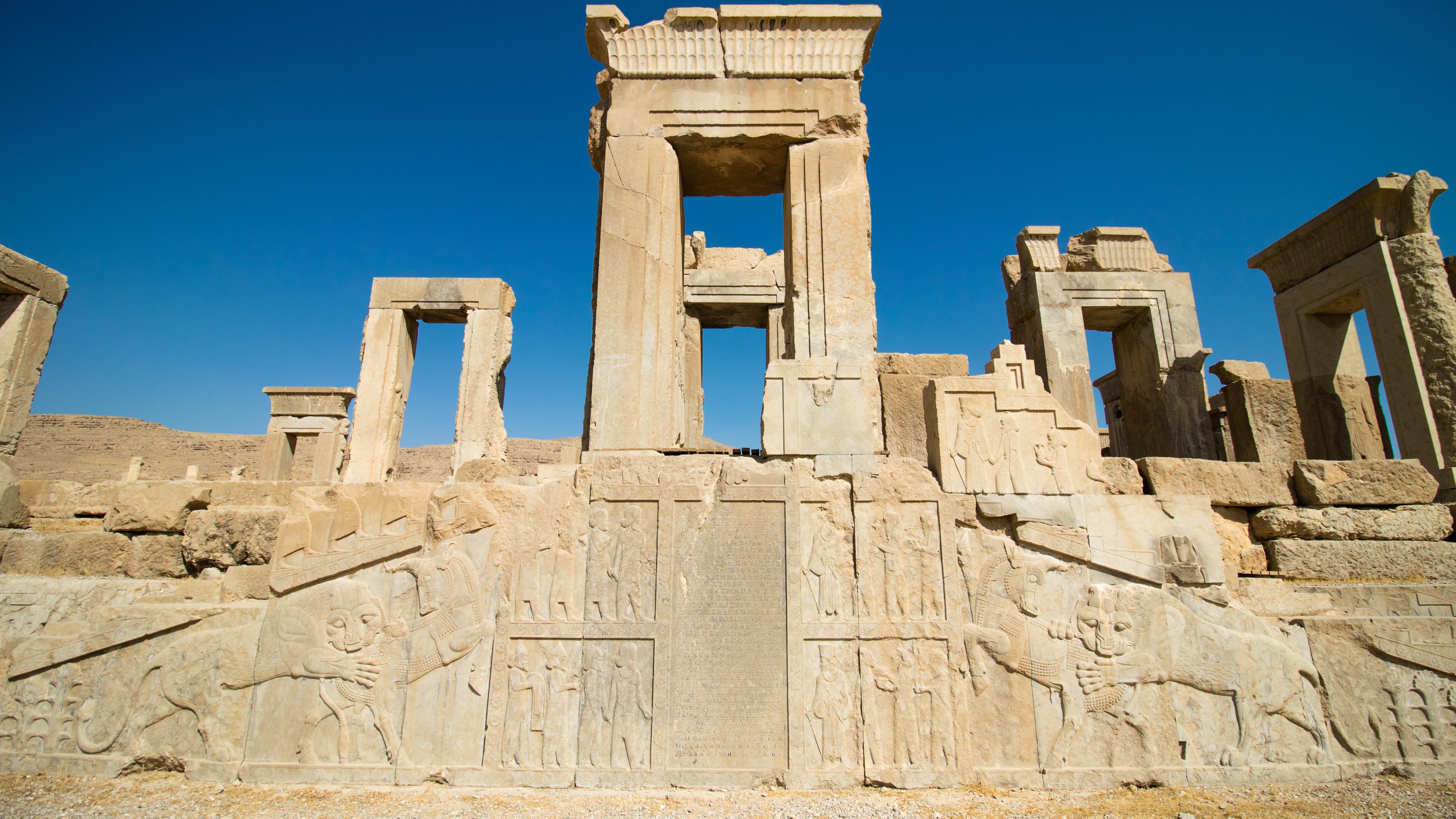
Persepolis and Naqsh-e Rustam & Rajab
Persepolis – an ancient capital of Persian Empire means “City of Persians”. It is situated 60 km northeast of Shiraz was also the ceremonial capital of the Achaemenid Empire. Iran hosts ancient mysteries, with some sites dating back over 7,000 years, far before the civilization of the Persian Empire, which spanned across Northern Africa, India, and southern Europe at the height of its power between 500 and 350 BC. This archaeological site is the number one tourist destination in the country, and with good reason. Many investigates why this forgotten empire is one of the greatest wonders of the ancient world. The earliest remains of Persepolis date back to 515 BC. It is a good example of the Achaemenid style of architecture.
Persepolis is no doubt the main attraction that lures tourists to Iran. These ancient ruins served as the capital of the Persian Empire. Referred to locally as Takht-e Jamshid and established by King Cyrus the Great in the 6th century BC and finished by his son Cambyses II and grandson Darius over the course of 150 years.
The architecture was to be indicative of its supremacy; therefore, buildings such as the Imperial Treasury, Apadana Palace, and others were constructed. It was so great, in fact, that its splendor continues to act as a model for present-day architecture, as seen in Kish Island’s Darius Grand Hotel and the Ministry of Foreign Affairs in Tehran.
Inside the city ruled by King of Kings wall reliefs are among the highlights of this archaeological wonder. Lotus flowers and cypress trees frequently appear throughout the site. Also, other notable carvings represent nobles, dignitaries, and envoys of Ethiopian, Tajik, Egyptian, Indian, and Armenian nationalities, among others, who visited the capital bearing tributes. Every detail of their face, hair, curly beards, and clothes is both mind blowing and connected to the present in appearance.
Persepolis is not only a symbol of Iran, but its significance and grandeur are embedded in the psyche of Iranian people today. For this population, it is not just ruin site of a forgotten empire. It is the place where the Cyrus Cylinder also called “the first charter of human rights” that expressed tolerance and equality for all religions, races, and languages, was recorded.
Even though nowadays Iran receives quite a lot of negative attention in mass media, Persepolis continues to act as a reminder of one of the most powerful empires and is a source of pride for Iranians who remember that they are descendants of these past great leaders and this most civil of ancient civilizations. You could even say that it serves as an aspiration for Iran to once again become a model society and rise to the top and be the among the leaders.
An ensemble of historic, religious and artistic works from the Achaemenian and Sasanian periods located within a small perimeter near the monuments of Persepolis and those of the pre-Sasanian city of Estakhr, between which flows the Polvar river.
Naqsh-e Rustam which means “Throne of Rustam” is located approximately 12 km to the northwest of Persepolis, the capital of the former Achaemenid Empire in present day in Iran. Engraved on the facade of a mountain range considered sacred in the Elamite periods are the rock-cut tombs of Achaemenid rulers and their families dating to the 4th and 5th centuries BC, as well as richly decorated reliefs carved by the Sasanians in the 3rd century CE. In addition to being a royal necropolis, Naqsh-e Rustam became a major ceremonial center for the Sasanians until the 7th century.
Naqsh-e Rajab is an archaeological site about 5 km north of Persepolis. The site is part of the Marvdasht cultural complex. Both Naqsh-e Rustam and Rajab sites are a tentative candidate for UNESCO World Heritage status.
Helpful tips
Markets. In Persepolis as in every other location on the world enjoyed by tourists you will have a chance to buy overpriced souvenirs. However, prices in grocery shops are similar as in all country.
Transportation. To get to Persepolis you can use car, bus or taxi which ever you think is more convenient for you. We hitchhiked and it was super easy as it is quite a tourist attracting city and main country roads are passing nearby this city, there is a lot of traffic.
To get around the city is best on foot as it is only a touristic site and your car will be left near the entrance.
Best of luck planning your holidays in Iran!
Is there anything else you would like to visit while in Iran?
If you have anything in mind, please let us know and let’s discuss it.
For more traveling tips subscribe to our newsletter!